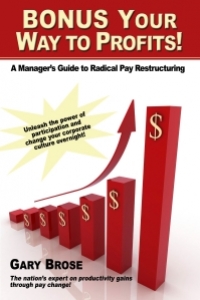5 Zero-Cost Ways to Re-energize your Workforce
 An energized and engaged workforce can transform your business from an also-ran to a market leader. Building your team up so they enthusiastically greet customers, solve problems through their own initiative, and help to grow sales simply by doing their job exceedingly well is a giant step toward success.
An energized and engaged workforce can transform your business from an also-ran to a market leader. Building your team up so they enthusiastically greet customers, solve problems through their own initiative, and help to grow sales simply by doing their job exceedingly well is a giant step toward success.
Below are five techniques management can use to impact attitudes and begin creating that energized workforce…and they cost you nothing except a bit of your time.
1 – Become a Great Listener – I know, that sounds simplistic, but studies have shown that business leaders who are considered dynamic and at the top of their field always share this same trait. They are all great listeners. So, when you are busy racing toward a deadline and some brave employee ventures into your office and wants to talk, let them. And don’t speak or interrupt. Let them say what they want to say and stay in the moment. Listen to every word. Take notes. Nod. Listen to them as though they were the world’s expert on their topic—as though they were Albert Einstein stopping by to share his thoughts on the Theory of Relativity with you. Then summarize their points at the end and comment on how you will respond (hint: that response should never be dismissive. Even if the idea is terrible, agree to think some more on it and get back to them. And then actually do just that).
2 – Provide High Quality Training – Rethink how you are doing your training. Is it haphazard, off the cuff, an afterthought? Revamp it, build it up and make sure your trainer is the right person. Here’s the deal – your best trainer isn’t necessarily your best employee. And it isn’t your fastest employee either. It is someone who is competent, somewhat methodical, and patient. Nothing leaves a worst first impression on a new-hire than racing through the training at breakneck speed and assuming that the newbie retained all he or she was shown. Have your trainer slow it down, ask repeatedly if they understand before moving on to the next part, and make it an enjoyable experience. Introduce the new employee to everyone and focus on making them feel comfortable. Businesses that provide a first-rate training experience are viewed as more desirable places to work at. Start everyone on the right foot and make sure the training includes 5-10 minutes with a senior management person who discusses “the big picture” and how the employee’s role impacts that.
3 – Catch Someone Doing Something Right – Many business consultants recommend this. I certainly didn’t invent it, but I have used it many times and it is one of the most powerful motivational tools I have ever seen in action. And it is fun too! So, how do you do that? The short version is that you spot someone doing a specific task in near perfect fashion. At that moment, you step in and draw attention to the individual, verbally recapping exactly what the employee did, sharing why it is so important, and confirming with any bystanders that they just witnessed the way to do it. There are so many positive things that come out of that moment: the featured employee gets public praise; the others get a retraining lesson on the right way to do something; all ambiguity about exactly how to perform that task is instantly removed; and you had a very positive exchange with multiple employees. The cost to you? Maybe five minutes.
4 – Maintain a Positive Ratio – Huh? What does that mean? Well, it turns out that multiple independent studies have shown that negative managers (those always nagging or belittling employees) don’t last very long in their jobs, so being more positive is always a good thing. But the question is – HOW positive do they need to be? The answer is to aim for a minimum 5 to 1 positive ratio. That is, try to have five positive moments of employee engagement for every negative one. Here’s the easy part – A positive engagement is when you speak with someone about, well, anything that isn’t negative. You can talk about the weather, sports, weekend plans, employee hobbies, jokes, current events, praise for good performance, factual information about the company, etc. A negative conversation is when you have to discuss poor performance or a mistake or any action that could have been done better. If you have had a reasonable number of positive engagements with an employee, when you have to be critical or negative about some action they took, they will actually listen to you and accept it without rancor. Why? Because you have taken the time to get to know them and you show you actually care. Critical comments then sound more like coaching, not criticizing, because you show you have their best interests at heart.
5 – Be the Servant – This may require a mind-shift for you. Do not think of yourself as the royal leader, the king or queen or the aristocracy. Think of yourself as the facilitator. Your job is to give the employees every tool they need to do their job better. When someone comes to you and says their desk chair can’t be adjusted and it is uncomfortable, don’t think of this being just another untimely intrusion into your precious space or an unwanted budget-breaking item that ruins your monthly P&L. Instead, think about the fact that you have an uncomfortable and unhappy employee who is not at the top of his game and therefore not in a good mood to give his best effort for the customers. Move quickly and take action. When that employee and others see they can trust you to act and can take problems to you, you become their ally and you’ve built trust. When all the employees trust you, you can make impressive changes as needed and in record time.
This, of course, is a very brief summary of five simple techniques. To complete the transformation of your company into a business with fully engaged employees, you still need to do more. I always recommend converting to a pay-for-performance model of compensation and de-linking performance reviews from the raise decision. Those two steps are mandatory if you are going to complete your transformation. The five steps I showed here, lay the groundwork for them. All of these techniques are discussed in my book, Express Exec, and my two previous books, Bonus your Way to Profits and The Ultimate Motivated Employee.
Remember, none of these techniques I’ve discussed here cost you anything other than your time and perhaps a bit of a shift or two in your thinking. It’s been said that we are what we think. I say, you already are, and it may not be working for you as well as you’d like. If so, consider changing your thinking and become a leader people can go to and trust that you’ll do the right thing. In today’s world, dealing with rapid change, the companies that earn the employees’ trust will be the final winners.


